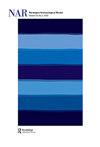Creating a Sense of Belonging: Religion and Migration in the Context of the 3rd Millennium BC Corded Ware Complex in the Eastern and Northern Baltic Sea Region
IF 1.1
3区 历史学
0 ARCHAEOLOGY
引用次数: 1
Abstract
Although not often discussed in an archaeological context, religion plays an important role in human migrations by working as an anchor of collective identity and distinction among the migrants. By establishing permanent religious structures – such as burials – the newcomers can also use religion as a tool to indicate an enduring presence in their new homeland. Remarkably, such practices can also be seen among the groups connected with the Corded Ware complex that migrated and settled in the eastern and northern Baltic Sea region roughly 5000 years ago. According to the material remains of the mortuary practices associated with this complex, these people did not travel alone; they carried with them a novel religion. Defined in this paper as a ‘steppe-originated religion’, this belief system continued mortuary practices known from the Pontic Steppe, while also incorporating material and ritual elements from different regions over the course of time. Despite this syncretism, the core ideas of the religion nevertheless persisted. As these ideas seem to relate to the mixing of past and present generations, as well as the merging of homeland and new land, this religion could have provided much-needed aid and comfort for a people on the move.创造归属感:公元前三千年波罗的海东部和北部地区绳纹器建筑群背景下的宗教和移民
尽管不经常在考古背景下讨论,但宗教在人类迁徙中发挥着重要作用,它是移民集体身份和区别的支柱。通过建立永久性的宗教结构,如葬礼,新来者也可以将宗教作为一种工具,表明他们在新家园的持久存在。值得注意的是,大约5000年前,在波罗的海东部和北部地区迁移和定居的与科德威尔建筑群有关的群体中也可以看到这种做法。根据与该建筑群相关的太平间做法的实物遗迹,这些人并非独自旅行;他们随身携带一种新颖的宗教信仰。在本文中,这种信仰体系被定义为“草原起源的宗教”,它延续了庞蒂草原的丧葬习俗,同时也融入了不同地区的物质和仪式元素。尽管这种融合,宗教的核心思想仍然存在。由于这些想法似乎与过去和现在几代人的融合,以及祖国和新土地的融合有关,这种宗教本可以为流动中的人民提供急需的援助和安慰。
本文章由计算机程序翻译,如有差异,请以英文原文为准。
求助全文
约1分钟内获得全文
求助全文
来源期刊

Norwegian Archaeological Review
ARCHAEOLOGY-
CiteScore
2.10
自引率
0.00%
发文量
13
期刊介绍:
Norwegian Archaeological Review published since 1968, aims to be an interface between archaeological research in the Nordic countries and global archaeological trends, a meeting ground for current discussion of theoretical and methodical problems on an international scientific level. The main focus is on the European area, but discussions based upon results from other parts of the world are also welcomed. The comments of specialists, along with the author"s reply, are given as an addendum to selected articles. The Journal is also receptive to uninvited opinions and comments on a wider scope of archaeological themes, e.g. articles in Norwegian Archaeological Review or other journals, monographies, conferences.
 求助内容:
求助内容: 应助结果提醒方式:
应助结果提醒方式:


